Although there’s a few rough spots in this crazy machinery, it’s still a pretty well put together piece of equipment. It’s a solid, kid-friendly choice to consider.
Type: Single-Player
Genres: Puzzle
Developer: Fakt Software
Publisher: Daedalic Entertainment
Release date: 18 October, 2016


First Impressions
It’s been more than a decade ago, but in elementary school, I recall playing a game similar in general style to Crazy Machines 3 (CM3). Using various gadgets in conjunction with one another, the goal was to assemble complex gizmos, which were vastly over complicated ways of completing a simple task. My memory is quite incomplete, so I wouldn’t know whether it was part of this same series or something else entirely, but there’s something appealing about watching a chain of events take place. Putting that into a puzzle game where you have to make Rube Goldberg machines, where you have a hand in the complex designs is a fun idea, so I wanted to give CM3 a shot.
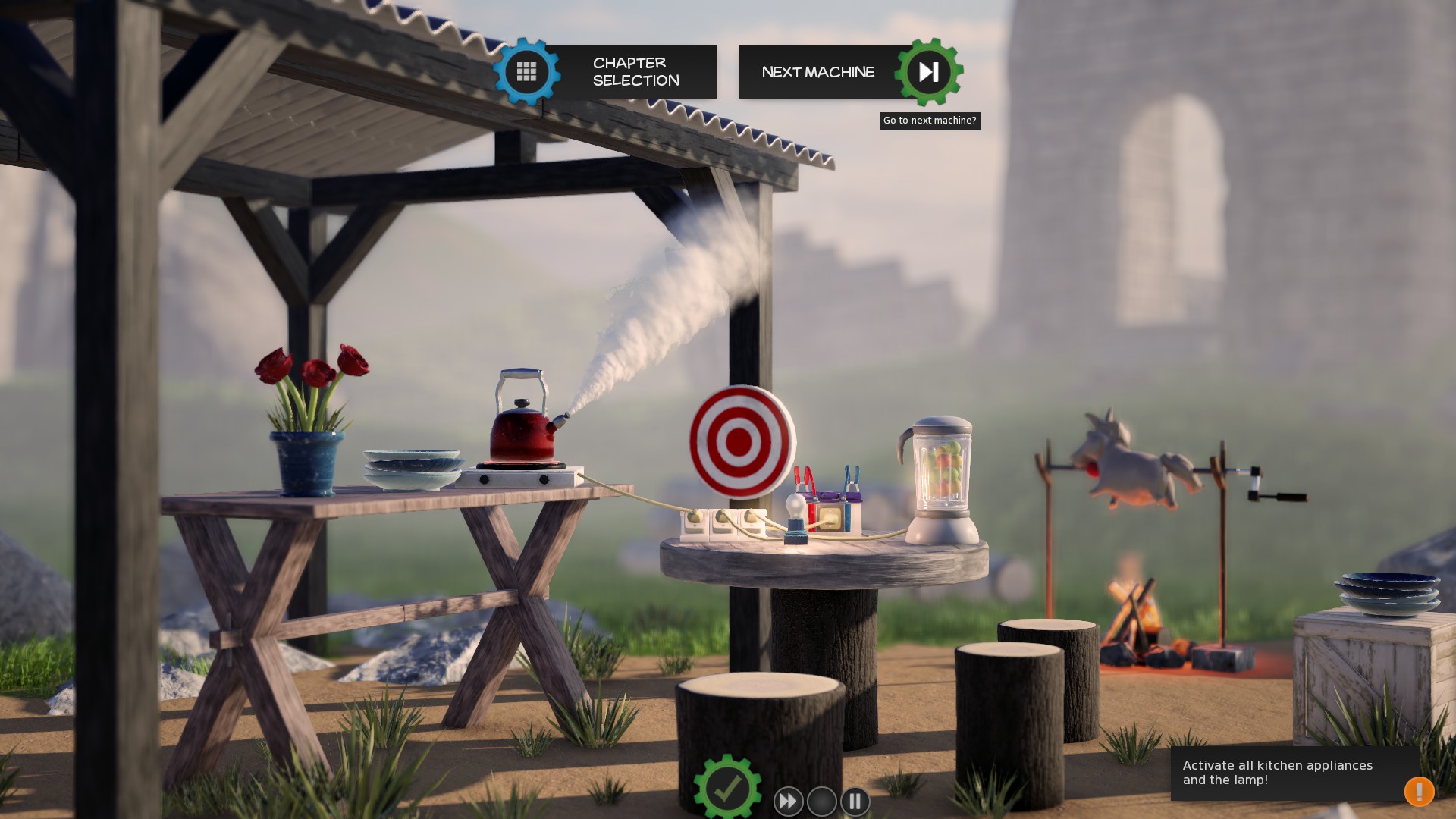
Gameplay
Although the machines that you’ll construct can be pretty complicated, the gameplay itself is rather basic. There are 5 main campaigns, with a total of 117 contraptions to put together, and 1 other campaign made up of mini-games. The bulk of the puzzles are contained in the first pack, with 80 available. With how they’re organized, it does a decent job of getting harder as you progress, though there were times where I could quickly figure out a higher difficulty puzzle, as it seemed pretty easy. This is probably in part due to how new gadgets are introduced, so there has to be a learning curve so you learn how it functions, such as the lasers. Aside from solving these puzzles or playing the mini-games, you’d have a sandbox available to build your own machines and create chain reactions with the range of items in CM3.
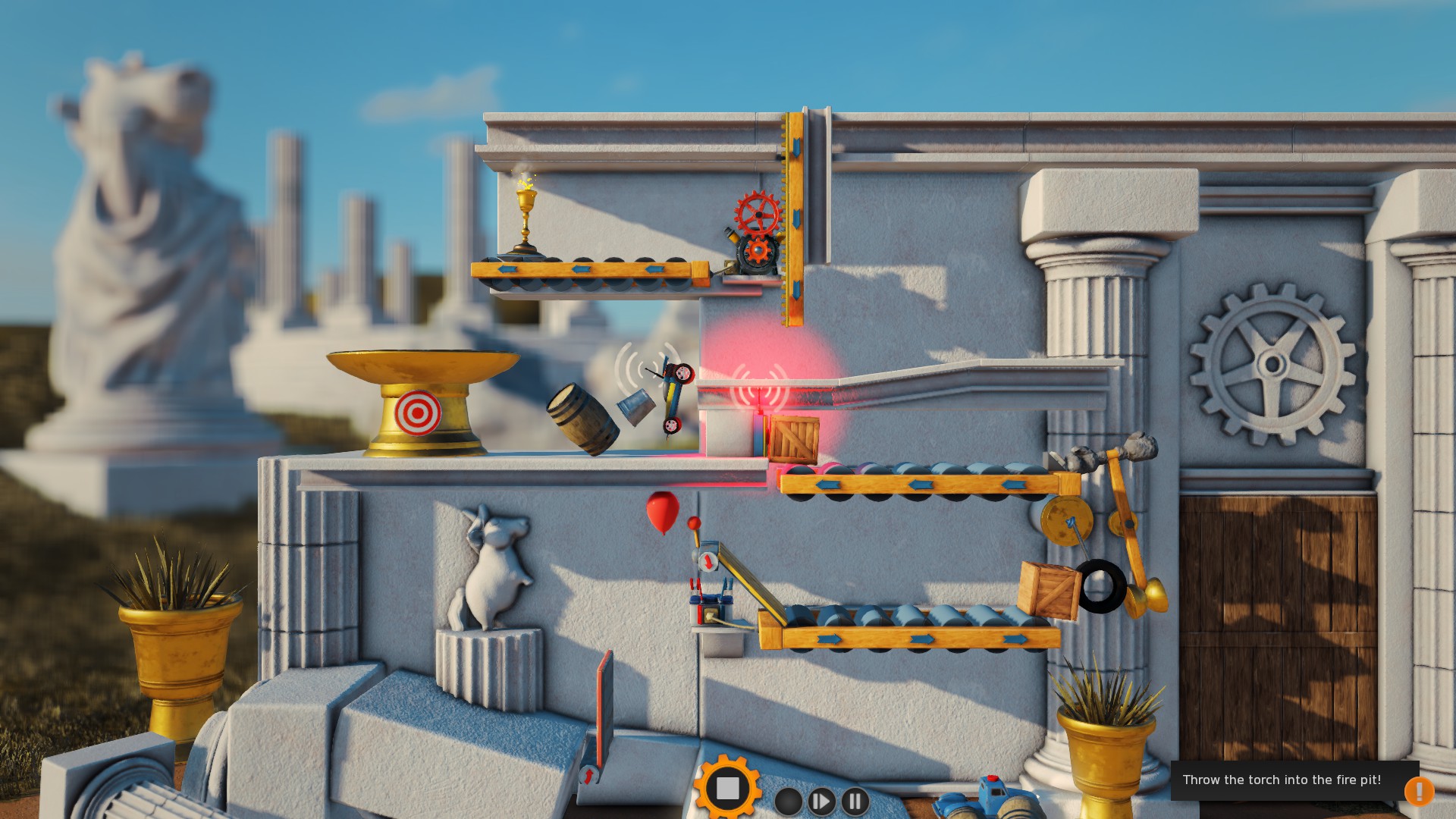
Controls
Due to how the game is designed, it’s controlled using the mouse, and by and large works as it should. I did have some issues though, as sometimes a gizmo or piece of it would be fickle and unresponsive. For instance, trying to select a gear so I could make an adjustment to where I placed it, or when trying to plug in an outlet. Also, it makes sense that there are pre-set objects which act as impediments to placing new objects, but sometimes this made it difficult to place something in the proper location because it had to be set up just right.
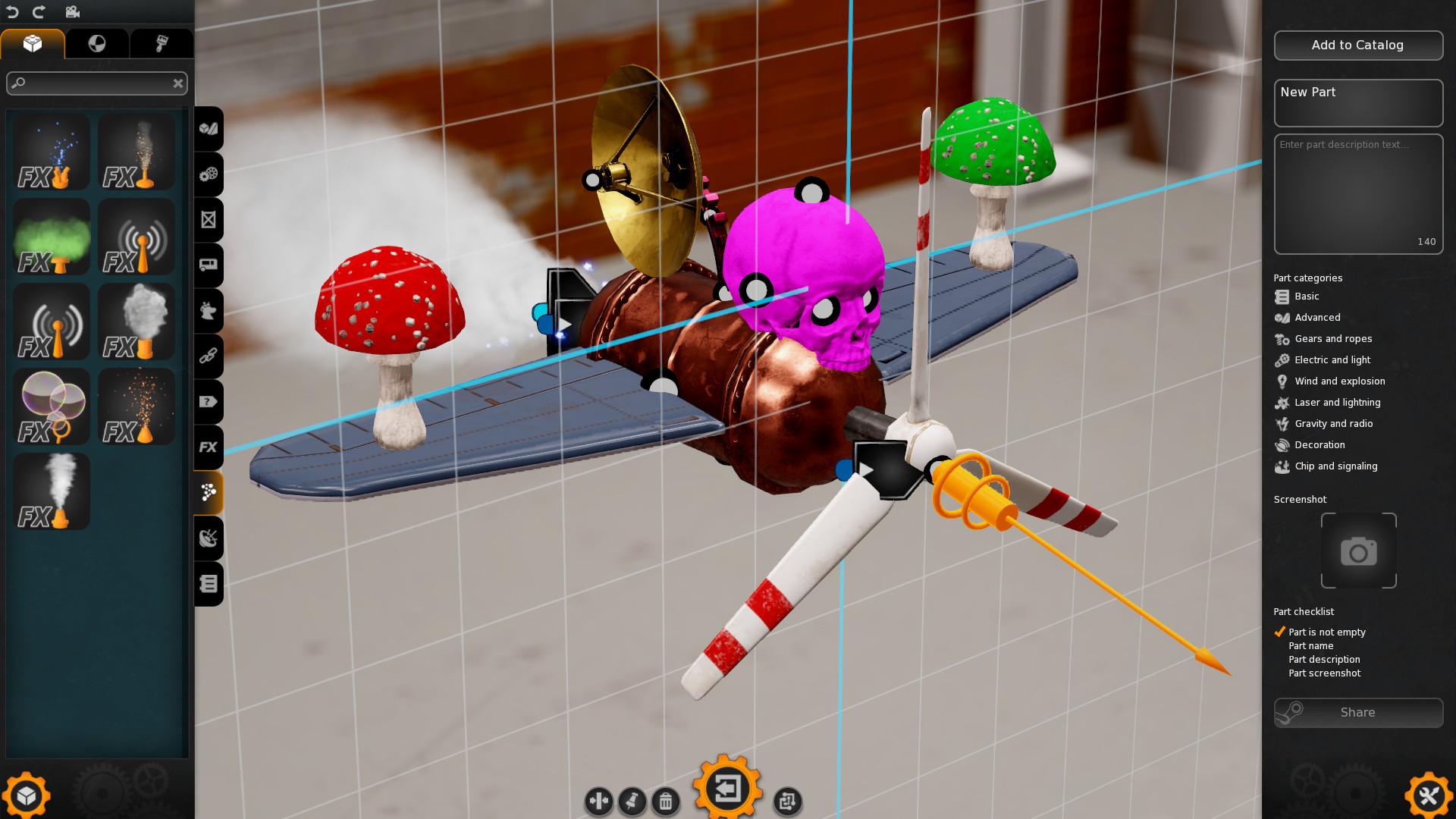
Story
Within the different themes for the puzzle packs, there’s a simple narrative that works through the game. For instance, while solving the space puzzles, each one will focus on something related to outer space. Whatever the theme, you’re assisting people who find themselves facing problems, from needing to find food, to wanting help transporting packages or trash. These are all explained with a few sentences as you load in each puzzle. There’s not really much of a story in CM3, but this gives a small explanation for why you’re trying to finish these incomplete oddities.
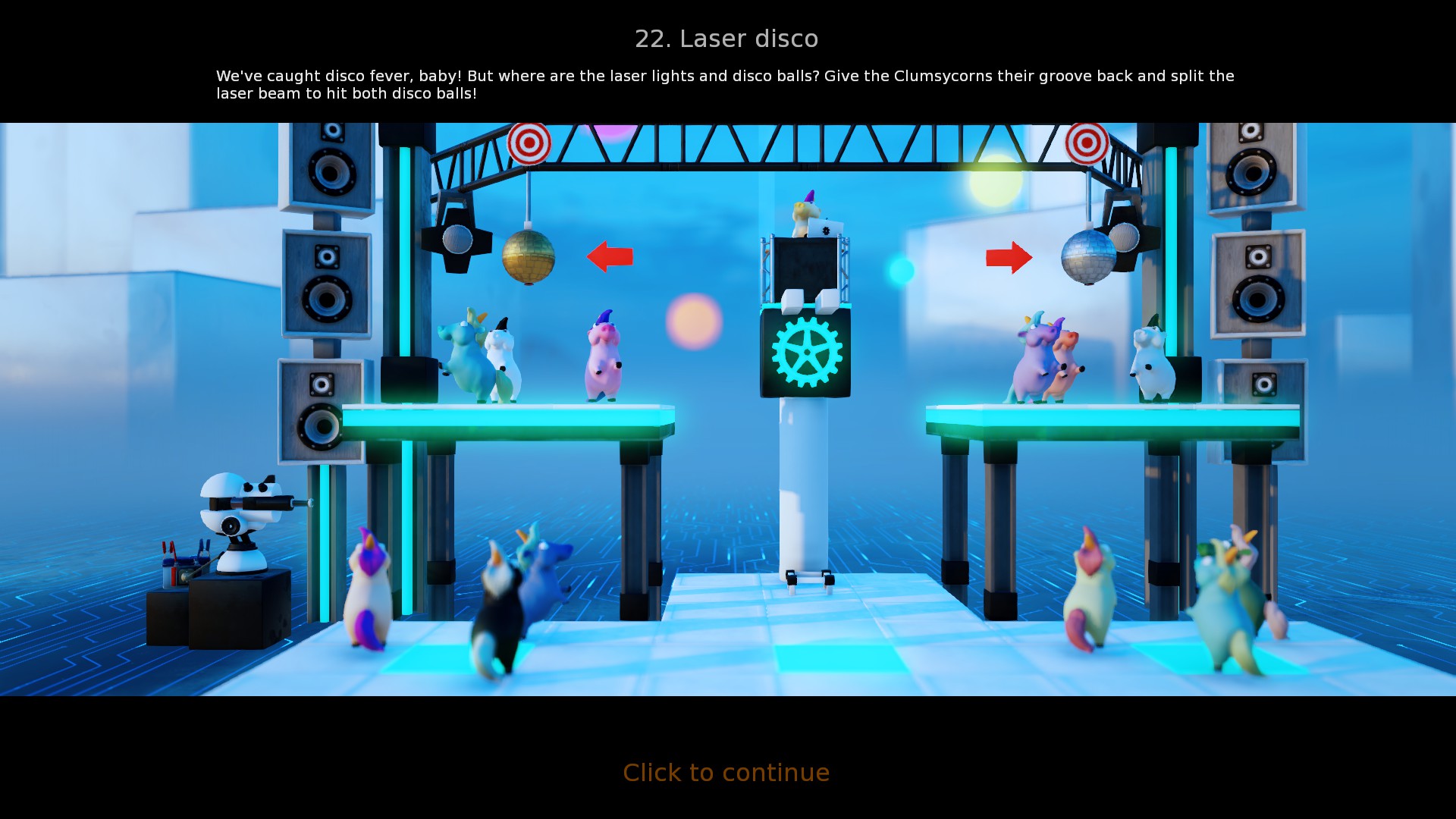
Graphics
Aside from the clumsycorns and a few other basic figures, there aren’t any characters or even living things in CM3. The people seeking your help are all off-screen, so the only things to display are the gizmos, gadgets, and devices used to make the machines. Everything looks alright, but the graphics aren’t much of a focus in the game. They’re clean enough to get the job done without looking horrible, and I don’t see an issue with that. Additionally, the backgrounds are fairly simple, and can look so blurred that they’re indistinct. Your focus won’t often look that way though, as I only noticed when I looked at them for the review.

Sound Design
The soundtrack makes for good background music, as it’s not overbearing or distracting. When I went out of my way to listen to it, I was surprised that the songs were lively with strong percussive elements. Some songs have a beep and boop sound to them, which suits the mad scientist (well, maybe grouchy) theme. There’s not much for sound effects, but those that are needed sound fitting, such as the laser beams and explosives. When you speed up the action, some noises are kind of grating, but it’s not that bad.
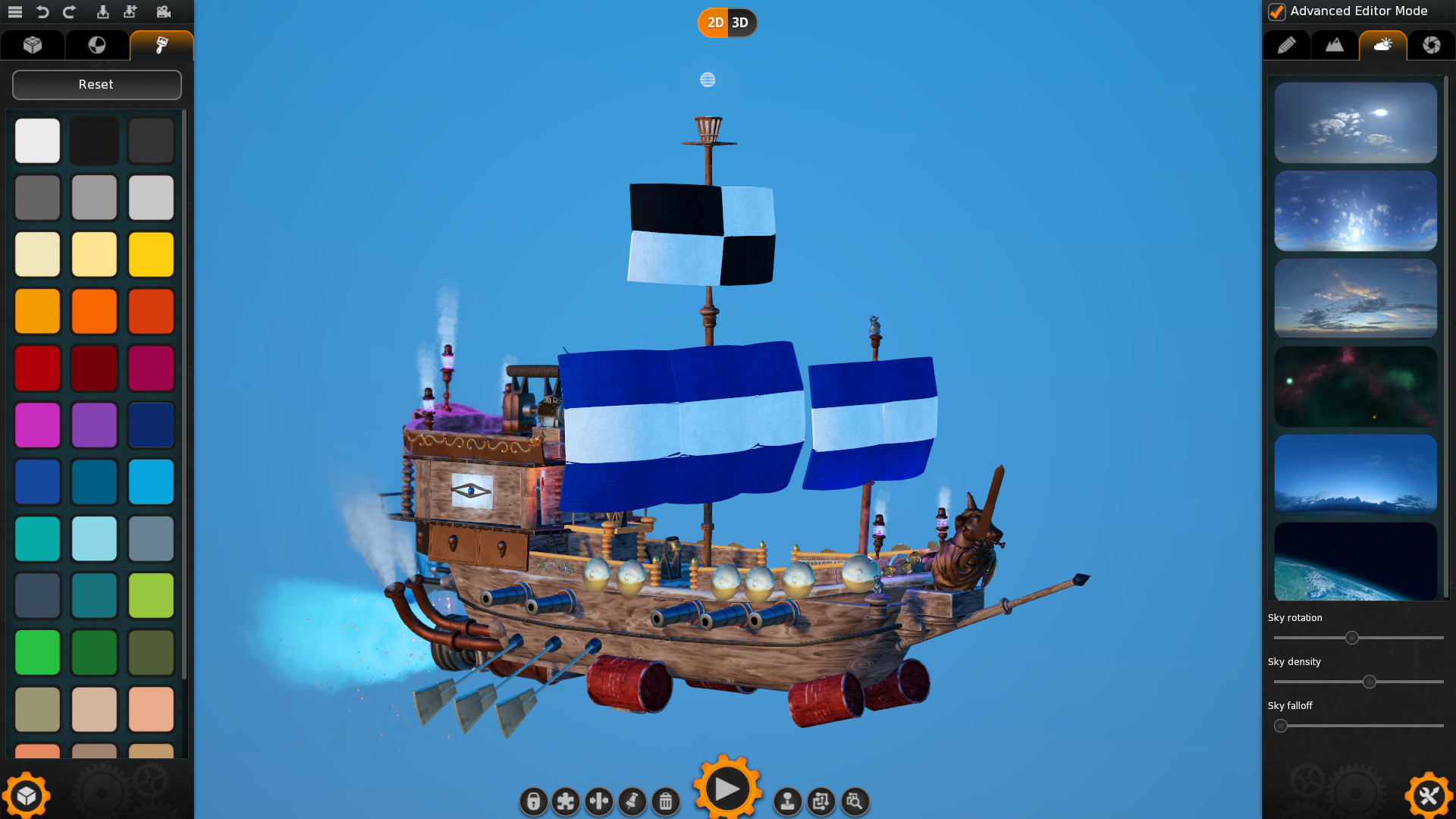
Pros
- It’s really enjoyable when you can deduce what the intention of the puzzle is, how the pieces would theoretically go together, and with a bit of trial and error, work out the solution. Watching the machine do its thing is fun. These worked best when the system worked around a linear sequence. Sometimes though, I had no idea what the developers were driving at, and couldn’t work out where to put the remaining items.
- Some players made decent puzzles and contraptions in the workshop, but I’m not sure if it took off the way developers might have hoped for. When I tried playing around with making stuff, I found the controls kind of stiff and clunky since you had to work with them in three dimensions.
- Speeding up and slowing down the mechanisms can help get you through the early parts you’ve already figured out and help you work out the physics or angles of more precise set-ups. Too bad there isn’t a way to move it back and forth though.
Cons
- Although quite a few puzzles are well-designed, there were times that I solved a puzzle with leftover parts. I clearly didn’t follow the developers’ solution, but when that happened, I wasn’t sure what they had in mind. There were issues in how intention was communicated to the player. However, playing earlier games in the series may have helped build a familiarity with the way these puzzles are meant to work.
- The mini-games could serve as a short time-killer, but they’re not that enjoyable to play. It’s a feature that would be more meaningful for someone who had very few games and wanted to get more playtime out of CM3. Otherwise, it’s not something you’d spend time on.
Tips
- Some parts will limit their placement based on their size or shape. A large laser beam will have to go in an open area, while an L-shaped pipe might fit snugly into an area with just enough clearance around it. Pay attention to anything that requires electricity or a plug-in, as that can also determine where they have to go.
- I made an attempt at each puzzle, but I wasn’t afraid to refer to a guide for the solution. Sometimes I just needed an idea of how something functioned, and then I could figure out the specifics myself.
- Start each stage by hitting play just to see what happens by default. If pieces fall immediately to the ground, that’s a good hint that they would either trigger something or need a platform to rest on.
Final Thoughts
If for no other reason, I wanted to play CM3 because I’d had it in my library for a few years, and knew that it wouldn’t take too long to finish. I wasn’t terribly surprised when I came across stumbling blocks that held me up from progressing, as methodical puzzles tend to be my undoing. However, a puzzle where you’re able to move the pieces at your disposal with complete freedom, making slight tweaks and trying it multiple times was more engaging than I expected. Many puzzles keep you restrained in many ways, such as being unable to move freely or having to progress in a strict order, but it’s not like that in CM3. Once you get to a puzzle pack, you can try them in any order you want, and being able to tinker with one area or a few gizmos at a time the way you want is refreshing. There are still parameters I have to work under, but it feels more natural picking up all the parts I have now, seeing how they interact, and making adjustments. For younger kids who show an interest in science, I could see this being a good choice, though I also enjoyed watching blocks fall over and balls following their guide rails. There’s a few games in the series, but since they’re all priced the same, I’d suggest going with this over its earlier iterations.












A spiritual successor to The Incredible Machine, for sure. I’m not far into it and came to this review in search of the developer’s contact info to see if they had a patreon or something, as I got this game for a dollar on a heavy sale and feel like the devs need some more of my money.
Nice review! I can’t wait to play through the rest of this game.